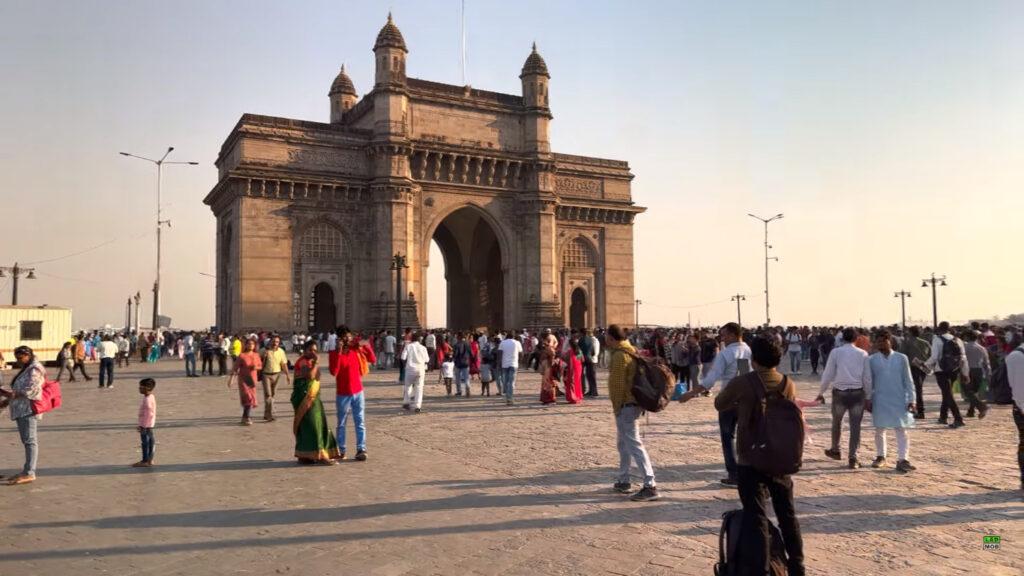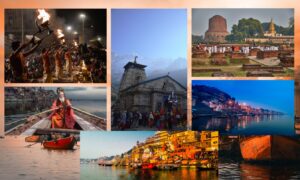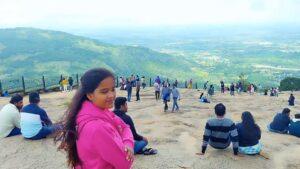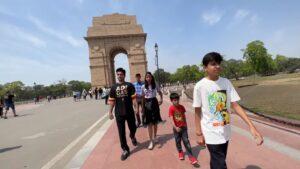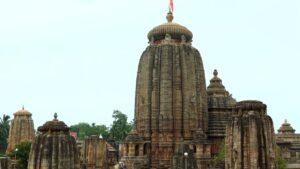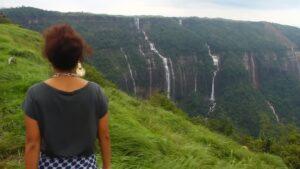About Gateway of India
The Gateway of India is a stunning arch monument in Mumbai. It is a masterpiece of Indo-Islamic architecture, with a dome, turrets, carvings, and inscriptions. Visit the Gateway anytime for free and enjoy the views of the sea, the boats, and the Taj Mahal Palace Hotel. Also, take a ferry to nearby attractions like Elephanta Caves. The Gateway of India is a symbol of Mumbai’s history, culture, and heritage.
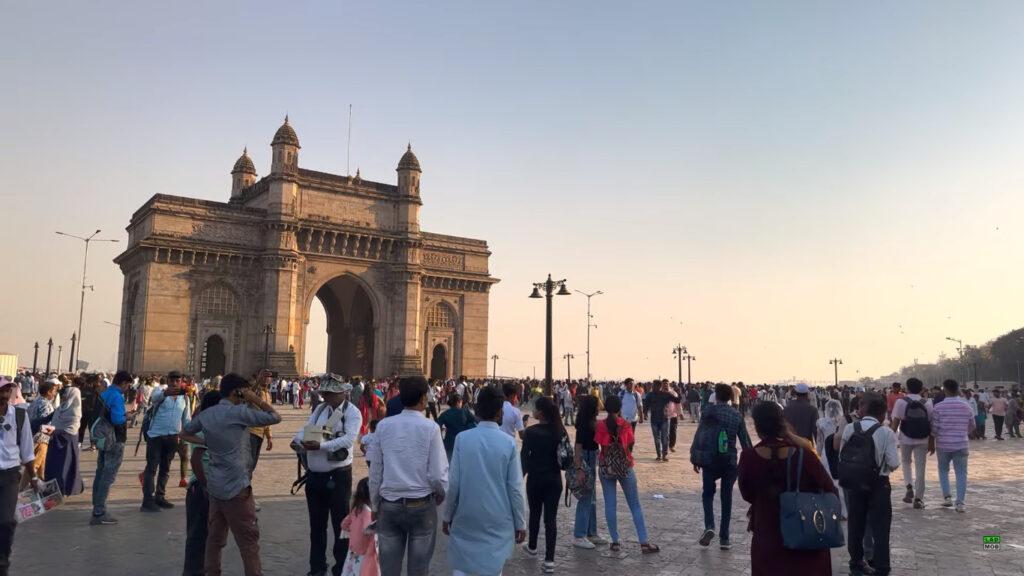
Gateway of India History
The Gateway of India is a historical monument that stands on the shore of Mumbai, India. It was built to honor the visit of King George V and Queen Mary to India in 1911, as well as to mark the end of British rule in India in 1948. It is one of the most popular tourist attractions in Mumbai and offers a scenic view of the Arabian Sea and the Taj Mahal Palace Hotel. The Gateway of India also hosts cultural events and festivals, such as the Elephanta Festival of music and dance. The Gateway of India has a rich and fascinating history that reflects the changing times and cultures of India.
Gateway of India Architecture
The Gateway of India is an impressive example of Indo-Islamic architecture, influenced by the 16th-century Gujarati style. It is made of yellow basalt and reinforced concrete and measures 26 meters (85 feet) in height and 15 meters (49 feet) in diameter.
The arch has intricate carvings and latticework and is adorned with four turrets. The central dome has a diameter of 48 feet and a height of 83 feet. The Gateway of India also has inscriptions on both sides, one in English and one in Marathi.
The Gateway of India is a popular tourist destination, as well as a gathering spot for locals, street vendors, and photographers. Enjoy the scenic views of the sea, the boats, and the Taj Mahal Palace Hotel, which is located opposite the Gateway. Also take a ferry ride from the Gateway to nearby attractions such as Elephanta Caves, Alibaug, and Mandwa. The Gateway of India is also a venue for cultural events and festivals, such as the annual Elephanta Festival of Music and Dance.
Gateway of India Timings and Entry fees
The Gateway of India is open to visitors 24 hours a day, seven days a week. There is no entry fee or ticket required to visit the Gateway. May have to pay for parking, ferry rides, or photography services.
The best time to visit the Gateway of India is during the early morning or evening hours when you can avoid the crowds and enjoy the pleasant weather. You can also witness the spectacular sunrise or sunset over the sea from the Gateway.
Places to Visit Near Gateway of India Mumbai
Places you can explore near the Gateway of India:
- Taj Mahal Palace Hotel: Right next to the Gateway of India, this historic hotel is an architectural marvel and worth admiring even if you’re not staying there.
- Elephanta Caves: You can take a ferry from the Gateway of India to Elephanta Island, where you’ll find ancient rock-cut caves with intricate sculptures, including the famous Trimurti statue.
- Colaba Causeway: A popular shopping street known for its bustling markets, where you can shop for clothes, jewelry, handicrafts, and more.
- Mumbai High Court: A grand colonial-era building with stunning architecture, it’s an interesting place to visit if you appreciate historic architecture.
- Mumbai Harbour: Take a leisurely walk along the promenade and enjoy the picturesque views of the Arabian Sea and the iconic Taj Mahal Palace Hotel.
Delhi to Mumbai Distance
The distance between Delhi and Mumbai is about 1414 kilometers by road and 1148 kilometers by air. The fastest way to travel from Delhi to Mumbai is by plane, which takes about 3 hours and 58 minutes.
The fastest way to travel from Delhi to Mumbai is by plane, which takes about 3 hours and 58 minutes. The cheapest way to travel from Delhi to Mumbai is by train, which costs between 600 and 2800 rupees and takes about 15 to 22 hours. Also, travel by bus or car, but these options are more time-consuming and expensive.
Gateway of India to Elephanta Caves
To reach the Elephanta Caves from the Gateway of India in Mumbai, you’ll need to take a ferry.
- To reach the Elephanta Caves from the Gateway of India, you need to take a ferry that operates every 15 minutes from 9 a.m. to 3 p.m.
- The ferry ride takes about an hour and costs 260 rupees per person. The ferry will drop you at the Elephanta Caves (Station), which is a short walk from the caves. Also, hire a toy train or a porter to carry your luggage.
- Note that ferry schedules and ticket prices may change, so it’s advisable to check the most up-to-date information before your visit. Also, be prepared for some walking and climbing stairs when exploring the caves on Elephanta Island.
The Elephanta Caves are a group of ancient rock-cut temples dedicated to Lord Shiva, located on an island near Mumbai. The caves are famous for their sculptures and carvings depicting various aspects of Hindu mythology. The Elephanta Caves are a UNESCO World Heritage Site and a popular tourist attraction.
Who built the gateway of India and in which year?
- The Gateway of India was built by the British to honor the visit of King George V and Queen Mary in 1911, and to mark the end of British rule in 1948.
- The architect was George Wittet, who designed the arch-monument in Indo-Islamic style. The foundation stone was laid in 1913, but the construction was delayed by World War I and other factors. The Gateway of India was completed in 1924 and inaugurated by the viceroy of India, Lord Reading.
Why Gateway of India is famous?
The Gateway of India is famous for being one of the most iconic landmarks in Mumbai, and a symbol of the city’s history, culture, and heritage.
Why it is called Gateway of India?
The “Gateway of India” is probably called so because it is the first sight welcoming, the eager eyes of visitors approaching Mumbai.
Where is the gateway of India situated?
The Gateway of India is situated in the city of Mumbai, India. It is located on the waterfront of Apollo Bunder, overlooking the Arabian Sea.
The Gateway of India is more than just a monument; it is a testimony to Mumbai’s past, present, and future. It is a place where you can experience the city’s diversity, vibrancy, and charm. A trip to the Gateway of India will surely leave you with unforgettable memories and impressions.
